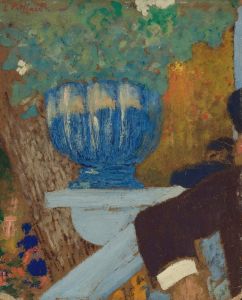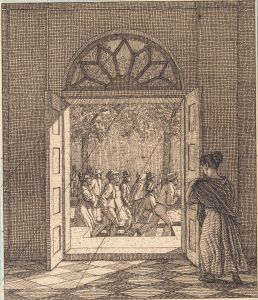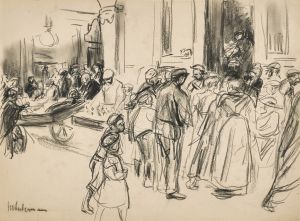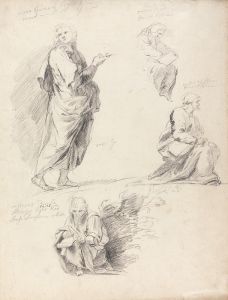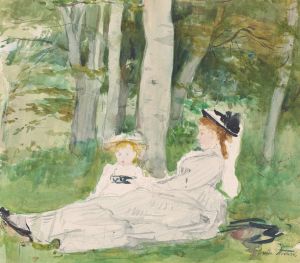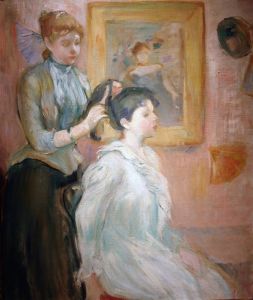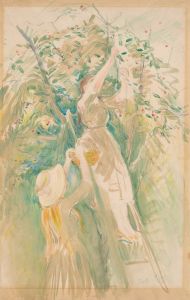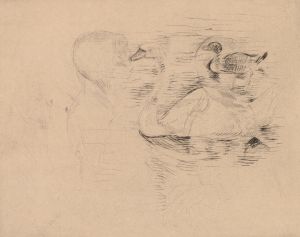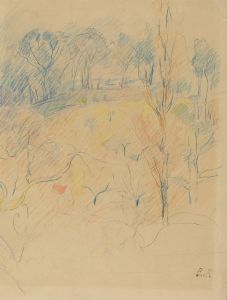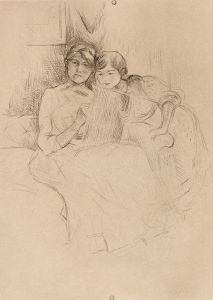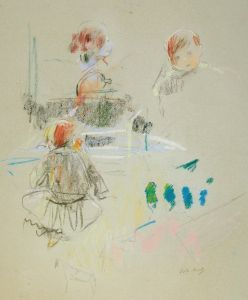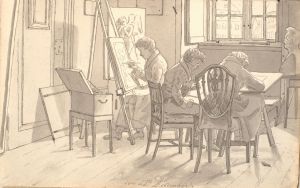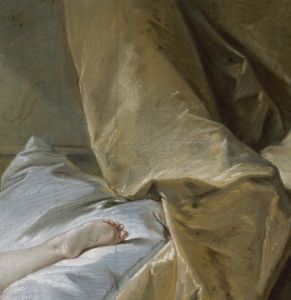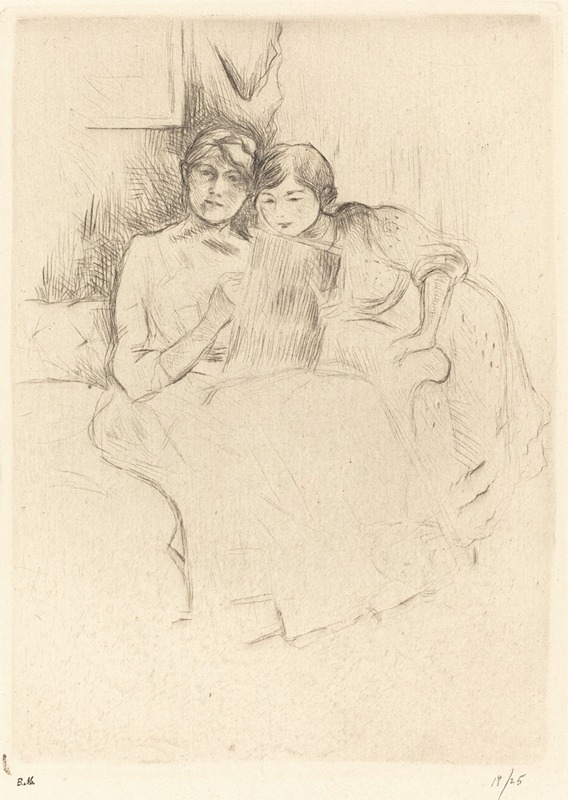
The Drawing Lesson
A hand-painted replica of Berthe Morisot’s masterpiece The Drawing Lesson, meticulously crafted by professional artists to capture the true essence of the original. Each piece is created with museum-quality canvas and rare mineral pigments, carefully painted by experienced artists with delicate brushstrokes and rich, layered colors to perfectly recreate the texture of the original artwork. Unlike machine-printed reproductions, this hand-painted version brings the painting to life, infused with the artist’s emotions and skill in every stroke. Whether for personal collection or home decoration, it instantly elevates the artistic atmosphere of any space.
Berthe Morisot, a prominent French Impressionist painter, created "The Drawing Lesson" in 1889. Morisot was one of the few female members of the Impressionist movement, and she was known for her delicate and nuanced portrayals of domestic life and intimate scenes. Her work often focused on the lives of women and children, capturing the subtleties of everyday moments with a light and expressive touch.
"The Drawing Lesson" exemplifies Morisot's skill in depicting intimate family scenes, a common theme in her oeuvre. The painting features a young girl engaged in a drawing lesson, presumably with her mother or a female guardian. This setting reflects Morisot's interest in the education and upbringing of children, a subject she explored in various works. The painting is characterized by Morisot's signature loose brushwork and a soft color palette, which convey a sense of immediacy and intimacy.
Morisot's technique in "The Drawing Lesson" aligns with the Impressionist movement's emphasis on capturing the effects of light and atmosphere. Her use of light, airy brushstrokes and a pastel color scheme creates a sense of warmth and tenderness, drawing the viewer into the quiet moment shared between the figures. The composition is balanced and harmonious, with the figures placed in a domestic interior that suggests comfort and familiarity.
Berthe Morisot was deeply influenced by her contemporaries, including Édouard Manet, with whom she shared a close personal and professional relationship. Her work was also shaped by her interactions with other Impressionists, such as Claude Monet, Pierre-Auguste Renoir, and Edgar Degas. Despite the challenges faced by women artists in the 19th century, Morisot achieved considerable recognition during her lifetime. She participated in seven of the eight Impressionist exhibitions held between 1874 and 1886, and her work was praised for its originality and sensitivity.
"The Drawing Lesson" is a testament to Morisot's ability to capture the essence of her subjects with grace and subtlety. Her focus on the domestic sphere and the experiences of women and children offers a unique perspective within the Impressionist movement, which was often dominated by male artists and their depictions of urban life and landscapes. Morisot's paintings provide valuable insights into the social and cultural contexts of her time, highlighting the roles and relationships of women in the late 19th century.
Today, Berthe Morisot is celebrated as a pioneering figure in the history of art, and her works are held in high esteem by art historians and collectors alike. "The Drawing Lesson" continues to be appreciated for its artistic merit and its contribution to the broader narrative of Impressionism. Morisot's legacy endures as an inspiration for future generations of artists, particularly women, who seek to explore and express the intricacies of human experience through their art.





